The Samsung Galaxy Note5 and Galaxy S6 edge+ Review
by Joshua Ho on October 2, 2015 8:00 AM EST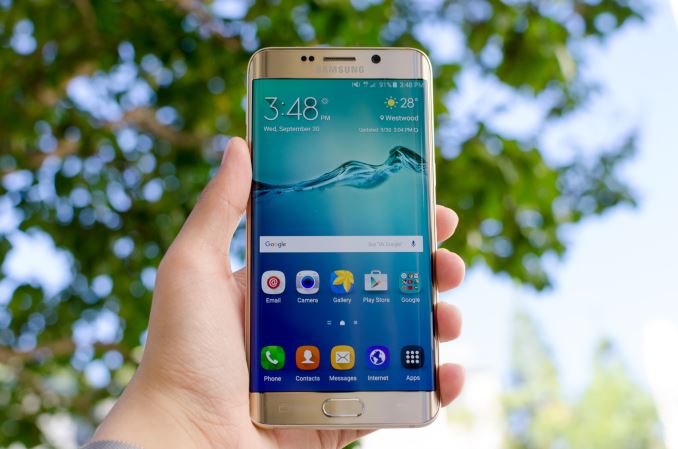
The Galaxy Note line has long been one of Samsung’s greatest assets in the mobile market. While other Android OEMs have made phablets before, Samsung was pretty much the first OEM to ship a high-end device in this segment. Although other Android OEMs have made phablets in the time since, Samsung continues to have a strong hold on this market.
For Samsung, unlike previous iterations of the Note family, the Galaxy Note5/S6 edge+ represents a significant change in design compared to previous generations, integrating many of the design aspects of the Galaxy S6 across the whole family. In many ways, the Galaxy Note5 resembles the Galaxy S6 in a different size. Meanwhile the Note5's companion device, the Galaxy S6 edge+, is effectively a second take on the Galaxy Note5, aiming for a design closer to a large format phone than a phablet as originially envisioned by Samsung. In this case the Galaxy S6 edge+ uses many of the design accents of the Galaxy S6 edge such as the curved display, all the while getting rid of the stylus.
Probably the easiest way to start is by looking at the basic specs. In order to make this easier, the usual spec sheet is below.
Galaxy Note 4 |
Galaxy Note5 |
Galaxy S6 edge+ |
|
| SoC | Qualcomm Snapdragon 805 4xKrait 450 @ 2.7 GHz |
Samsung LSI Exynos 7420 4xA57 @ 2.1GHz 4xA53 @ 1.5GHz |
|
| GPU | Adreno 420 @ 600 MHz | Mali T760MP8 @ 772MHz | |
| RAM | 3GB LPDDR3 | 4GB LPDDR4 | |
| NAND | 32/64GB eMMC | 32/64/128GB UFS 2.0 | |
| Display | 5.7-inch 2560x1440 SAMOLED | 5.7-inch 2560x1440 SAMOLED | 5.7-inch 2560x1440 SAMOLED Dual edge display |
| Network | 2G / 3G / 4G UE Category 6 LTE |
2G / 3G / 4G UE Category 6/9 LTE |
|
| Dimensions | 153.5 x 78.6 x 8.3 mm 176 grams |
153.2 x 76.1 x 7.6 mm 171 grams |
154.4 x 75.8 x 6.9 mm 153 grams |
| Camera | 16MP rear camera, 1.12 µm pixels, 1/2.6" CMOS size, F/2.2 OIS 5MP F/1.9 FFC |
16MP rear camera, 1.12µm pixels, 1/2.6" CMOS size F/1.9, OIS 5MP F/1.9 FFC |
|
| Battery | 3220 mAh (12.397 Wh) Removable |
3000 mAh (11.55 Wh) Non-removable |
|
| OS | Android 4.4 with TouchWiz (At launch) | Android 5.1 with TouchWiz (At launch) | |
| Connectivity | 2x2 802.11a/b/g/n/ac + BT 4.1, USB2.0, GPS/GNSS, NFC | 2x2 802.11a/b/g/n/ac + BT 4.2, USB2.0, GPS/GNSS, NFC | |
| SIM Size | MicroSIM | NanoSIM | |
The Galaxy Note5/S6 edge+ and Galaxy S6 are definitely different in size - coming in at 5.1" versus 5.7" - but there’s otherwise a great deal of similarity this time around. The Galaxy Note5 shares a number of major components with the Galaxy S6, so the big differences between the two lines this generation will primarily be due to the S-Pen and larger size, along with an extra gigabyte of RAM. However, there are still some notable differences that are worth going over, as Samsung has been able to integrate a few months of lessons learned from the Galaxy S6 into the Galaxy Note5.
Design
The first, and easiest place to start is the design of this phone. If you’re familiar with the Galaxy S6, the Galaxy Note5/S6 edge+ is pretty much identical from a functional perspective. The front face of the phone has the same earpiece, home button, front-facing camera, and various sensors. Flanking the home button will be the two capacitive buttons, which are multitasking and back from left to right. The usual Samsung logo is on top, where the display driver for the display is. The bezel retains the same texture that it does from the Galaxy S6, which causes some interesting reflection effects, especially in the sun. The display also has noticeably thinner side bezels than what we saw on the Galaxy S6 or Galaxy Note 4, which is visually quite impressive but in the absence of palm rejection is pretty close to the limit of minimum bezel size.
Along the side of the phone, the buttons, headphone jack, USB port, and speaker are all placed in the same places as the Galaxy S6, which should help if anyone is transitioning to the Galaxy Note5/S6 edge+ from the Galaxy S6. This means that the USB port is centered on the bottom of the phone, with the 3.5mm headset jack on the left side, and the speaker on the right. The volume buttons are also on the left side and are still as clicky and impressive as they were with the Galaxy S6, with no creep or mush and a clean break when the switch triggers. The power button is similar in feel and placed on the right side of the phone, high enough that you won’t accidentally activate the button when you’re picking up the phone.
The top of the phone has the SIM slot for both variants this time around unlike the Galaxy S6, which had the SIM slot in a different position depending upon which variant you got. Unlike the Galaxy S6 or Galaxy Note 4, neither variant has a port for an IR LED/receiver for remote functionality. The Galaxy Note5 also adds a port for the stylus next to the speaker.
Depending upon what phone you get, the major difference can end up being the shape of the back cover. While the Galaxy Note and Galaxy S6 both have glass for their back cover, the Galaxy Note5 has a 3D curved glass back cover much like the Xiaomi Mi Note line. This really improves the in-hand feel compared to the Galaxy S6, which felt a bit blocky. The Galaxy S6 edge+ retains the same flat back cover from the Galaxy S6, but feels a bit easier to grip than the Galaxy S6 edge which had an incredibly thin metal rail to hold on to. Both phablets will be fingerprint magnets on the back cover, but due to the use of glass it’s pretty easy to wipe off fingerprints unlike glossy plastic.
Relative to the Galaxy Note 4, the changes are definitely notable. The metal frame of the Galaxy Note 4 was a relatively angular design, with flat sides and chamfered edges. This design made the phablet feel much bigger relative to something like the Note5 or S6 edge+, thanks in part to Samsung further reducing their device thickness with this latest iteration. The back cover of the Note 4 is faux-leather plastic that peels off much like the Galaxy S2's back cover, with a removable battery and microSD slot. The display has the same buttons, but the bezel had a striped design for unknown reasons. Some people might prefer the design of the Note 4, but I suspect most people are going to prefer the design of the Galaxy Note5.
Overall, in the hand I’d still prefer the Galaxy Note5 to the Galaxy S6 edge+, but pretty much either phone has acceptable industrial and material design. I still wish Samsung would work on cleaning up the front of the phone to be a bit more cohesive, but for 2015 the design of the Galaxy Note5 and Galaxy S6 edge+ is actually quite good. Samsung has sought to distance itself from their reputation of Hyperglaze, and with this phone it’s pretty fair to say that they’ve achieved just that. Both phablets have no real ergonomic issues and are generally well-designed, although aesthetically there are some symmetry issues.


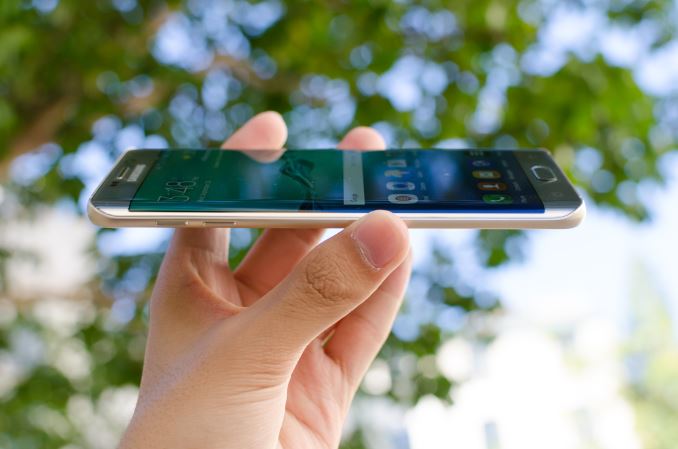
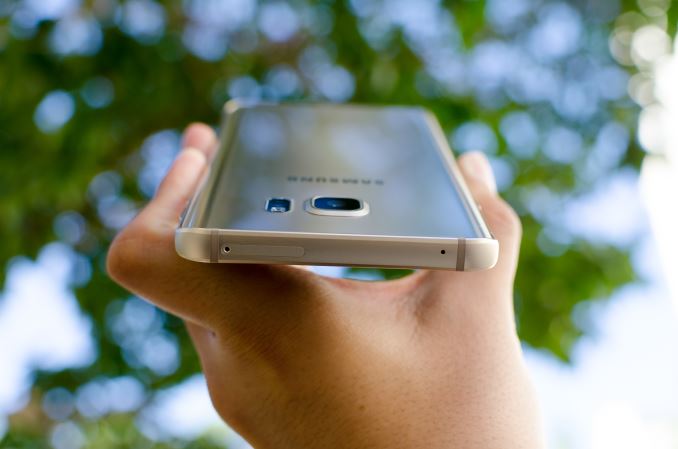
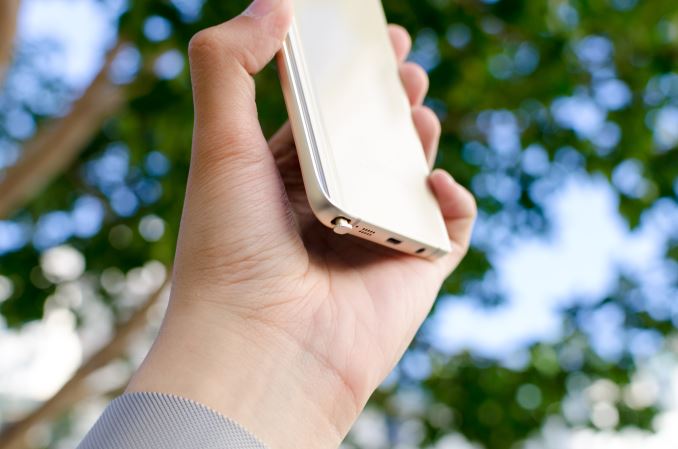
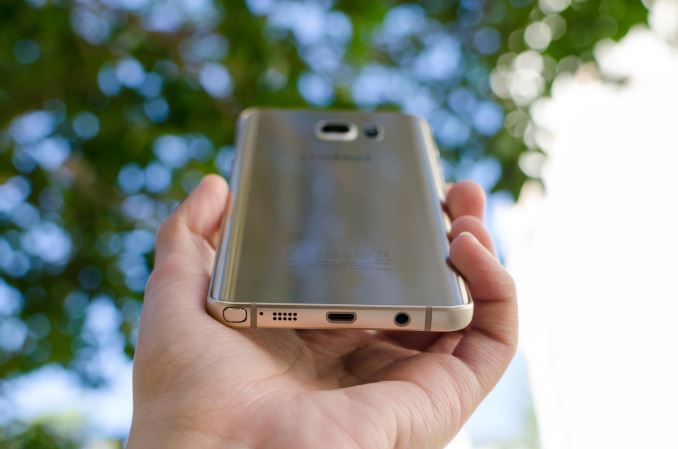








225 Comments
View All Comments
thedons1983 - Sunday, October 18, 2015 - link
Apple genius = regular retard. Those morons don't have a clue. I know more about iOS, than those idiots. Customer service does not equal customer satisfaction. Especially when the idevice in question breaks every few minutes.hrrmph - Sunday, October 4, 2015 - link
Nice review that hits most of the major points, but I would like to see a few more things returned to AT's reviews:- Audio performance (for many people, a phone is their primary audio source, so quality counts);
- Battery configuration (not to push the discussion one way or the other, just remind us whether it does or doesn't have a removable battery.);
- More on storage (considering AT's roots as a PC website, and smartphones' inexorable drive to eventually replace PCs, a wider discussion of storage is needed. Especially with phone cameras recording 4K and everyone's storage needs going up in formation, it is important to discuss how to store things on the device and how to offload them from the device. This issue is dogging Apple, Google, and Samsung, all of whom have now eschewed internal removable storage, without stating when they will develop a replacement, if ever.).
----------------
I would also like to see something added to AT's phone reviews:
- How to control audio playback without looking at the phone (particularly Play, Skip Forward to Next Song, and Skip Back to Previous Song, and Mute. Blackberry nailed most of this with their very helpful physical button configuration, and thus when driving in a car and playing music, I cannot be without a Blackberry. What are Apple, Google, Samsung and the others doing for audio control while driving... without having to buy a new car, that is. Is voice control the only way, and if so does it work well.)
SydneyBlue120d - Sunday, October 4, 2015 - link
Any info about the HEVC encoding? We know the SOC support it, however there is no way to use it, I think this relate to the HEVC licensing knightmare, do You think we will ever be able to use it? Maybe using some third parts app? Thanks a lot.kogaharukka - Sunday, October 4, 2015 - link
For Nand performance, please check it with Androbench v.4.0.The numbers from Androbench v.3.6 cannot show real Nand performance.
SnowleopardPC - Sunday, October 4, 2015 - link
My biggest issues with these phones are that Samsung surveyed Iphone users about what features they wanted in their next phone and of course the Isheep said nothing about Micro SD Card slots and changeable batteries.I went with Samsung because I want my 10,000 MAH extended battery and 200gb MicroSDXC card from Sandisk.
Now all Samsung makes is a cheap IPhone that runs anroid.
And the 128gb version was an after though and "might" be released in the next 2 months, and it still will be missing a micro SDXC card slot and have a low powered worthless battery......
thedons1983 - Sunday, October 18, 2015 - link
You are an idiot. Pure and simple. What a loser. Benchmarks are for idiots.coolhardware - Sunday, October 4, 2015 - link
As per the Kuzi's earlier comment:+the S6/Edge/Note 5 resolution of 2560x1140 = 3,686,400 pixels
+iPhone 6S Plus is 1920x1080 = 2,073,600 pixels.
A fewquestions: #1 how do these screens look next to each? (is there a noticeable quality difference)
#2 how much of a battery/performance penalty is there for Samsung? (are they competitive despite handling way more pixels, or do they suffer for it)
#3 how bright do the Samsung's get on "auto" b/c my S6 is visible in any sunlight conditions when in that mode, are the latest iPhone's also able to be viewed easily in full sun?
Lastly, why do AMOLED displays have difficulty with the "painted on" effect vs. LCDs? I notice that my wife's Moto X Pure's LCD looks crisper and more "painted on" than my S6.
PS thanks for the great review as always!
PSS For reference on the first questions, here are iPhone pixel densities: http://pixensity.com/search/?search=iphone
and Samsung Galaxy pixel densities: http://pixensity.com/search/?search=samsung%20gala...
Kuzi - Monday, October 5, 2015 - link
Thanks for the site showing the resolution and PPI for devices.To answer #2, Samsung have been improving/reducing the power draw of their AMOLED panels with each generation. So even while pushing such high resolutions the penalty is minimal, especially when compared to LCD technology.
For #3, you can check below and "Expand" the results to show more phones for the Sunlight Visibility test:
http://www.gsmarena.com/apple_iphone_6s-review-131...
ciderrules - Monday, October 5, 2015 - link
The power consumption for the higher resolution isn't just the display and technology. It's the GPU power required to drive that display. It takes more processing power to drive more pixels. Especially if you want day-to-day activities to be smooth (like scrolling).Kuzi - Tuesday, October 6, 2015 - link
The Galaxy S6 is getting 73 hours battery endurance rating:http://www.gsmarena.com/samsung_galaxy_s6-review-1...
iPhone S6 is getting 62 hours:
http://www.gsmarena.com/apple_iphone_6s-review-131...
So even though the Galaxy S6 is pushing 3.6 times more pixels compared to iPhone 6S it doesn't seem like the battery perfomance is suffering.
And the GPU doesn't run at high frequencies when web browsing or playing videos. Although for 3D games the battery will get drained faster with higher res screens for sure.